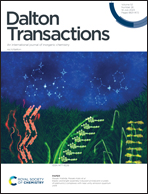Iron-doped bimetallic boride Fe-Ni2B/NF-x nanoparticles toward efficient oxygen evolution reaction at a large current density†
Abstract
Transition metal borides are seen as potential candidates for oxygen evolution reaction (OER) electrocatalysts due to their superconductivity and rich surface-active sites, but monometallic borides only display generic OER catalytic performance. Hence, iron-doped bimetallic boride nanoparticles (Fe-Ni2B/NF-x) on Ni foam are reported and applied as superior OER electrocatalysts with high catalytic activities. Such bimetallic boride electrocatalysts require overpotentials of only 194 and 336 mV to afford current densities of 10 and 500 mA cm−2 toward the OER in 1 M KOH electrolyte, and Fe-Ni2B/NF-3 can retain this catalytic stability for at least 100 h at 1.456 V. The performance of the improved catalyst Fe-Ni2B/NF-3 matches the best nickel-based OER electrocatalysts reported so far. Analysis of X-ray photoelectron spectroscopy (XPS) and Gibbs free energy calculations show that Fe-doping essentially acts to modulate the electronic density of Ni2B and lower the free energy of O adsorption in the OER. The charge density differences and d-band theory proved that Fe sites have a high charge state and can be taken as catalytic sites for the OER. This proposed synthesis strategy provides a different view for preparing efficient bimetallic boride electrocatalysts.



 Please wait while we load your content...
Please wait while we load your content...